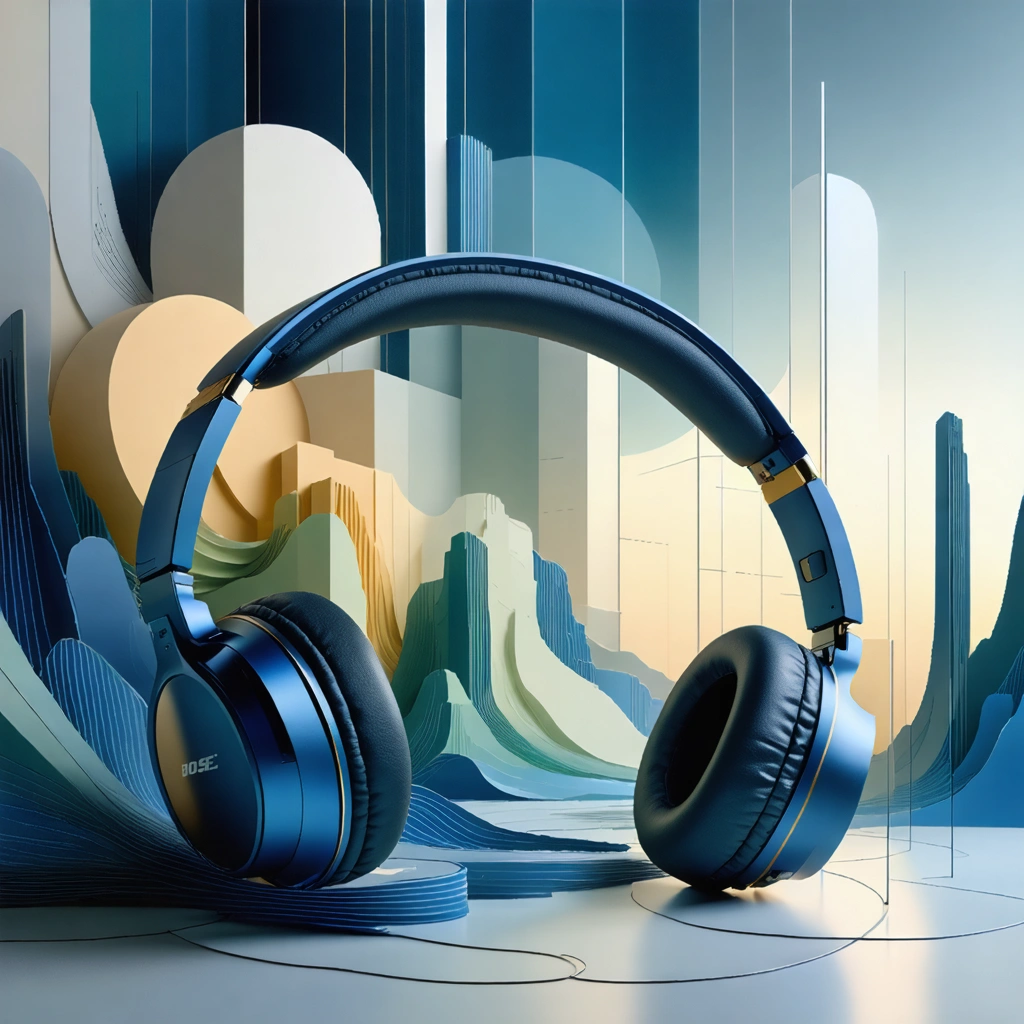
Why Does Sound Quality Matter More Than Ever?
Imagine this: you’re scrolling through your favorite streaming service, headphones on, and suddenly an ad breaks the rhythm. It’s not just any ad—it's a Bose advertisement that doesn’t just tell you about headphones or speakers; it lets you *hear* what makes Bose different. But why does this matter?
In today’s fast-paced media environment, consumers are bombarded with countless messages every minute. Many ads blend into the background noise, barely making a ripple. Yet, when it comes to audio products, the very essence of the brand hinges on one crucial element — sound quality. This is where Bose marketing truly shines, setting itself apart by allowing its audio to do the talking. Their campaign strategy doesn't just rely on flashy visuals or catchy slogans; it’s deeply rooted in the power of sound itself.
Capturing the Ears and Hearts of Both Audiophiles and Casual Listeners
Here’s the catch: Bose faces a diverse audience. On one hand, there are audiophiles—those passionate about every nuance and detail in sound. On the other hand, casual listeners want a reliable, immersive experience without the technical jargon. Crafting bose ads that appeal to both groups isn’t just a challenge; it’s an art form. How do you convince a hardcore sound enthusiast and a casual podcast fan that the same product fits their vastly different needs?
The answer lies in Bose advertising’s subtle yet powerful strategy: they don’t just boast about technology, they evoke the experience of sound. Their ads often focus on moments that resonate emotionally—whether it’s the crispness of a live concert, the clarity of a whispered dialogue in a movie, or the deep bass that makes your favorite track come alive. This narrative approach in the bose campaign invites every listener into a shared space where superior sound quality transforms everyday moments into something extraordinary.
What This Article Will Explore
In the sections ahead, we’ll take a closer look at how Bose’s audio-driven advertising strategy tactfully balances technical excellence with emotional connection. You'll discover:
- How bose marketing leverages sound to create compelling, memorable advertising content
- The distinctive elements that make Bose ads stand out in a crowded marketplace
- Why highlighting superior sound quality is essential for capturing both audiophiles and casual listeners
- Examples of successful bose campaigns and what they teach us about audio-focused branding
Whether you’re a marketing professional seeking inspiration, a tech enthusiast curious about branding strategies, or simply a lover of great sound, this exploration of Bose advertising will provide fresh insights into the art and science of captivating audiences through audio.
So, buckle up your headphones, and let’s dive into the world where sound is not just heard—it’s experienced.

Bose’s Audio-Driven Advertising Strategy: How Bose Ads Captivate Audiophiles and Casual Listeners
What makes Bose’s advertising strategy stand out in highlighting superior sound quality?
Bose’s advertising strategy is meticulously crafted to emphasize the brand’s hallmark—superior sound quality. This focus is central to how Bose ads resonate with both audiophiles and casual listeners. By showcasing authentic listening experiences and the technical prowess of their products, Bose marketing elevates sound quality from a mere feature to an emotional and sensory benefit.
The key to Bose advertising lies in its ability to translate complex audio technology into relatable narratives. For example, many Bose campaigns highlight real-world scenarios such as enjoying music in noisy environments or experiencing immersive sound during travel, which helps consumers understand the tangible advantages of Bose products.
Additionally, Bose uses high-quality visuals and sound design in their ads, often incorporating testimonials or demonstrations that allow viewers to almost “hear” the difference. This approach not only educates potential customers but also builds trust by demonstrating the brand’s commitment to excellence.
How does Bose marketing balance appealing to both audiophiles and casual listeners?
Bose marketing skillfully balances its appeal by segmenting messaging within its advertising campaigns to address the distinct needs of audiophiles and casual listeners alike. Audiophiles are drawn to technical precision, clarity, and innovations such as noise cancellation and spatial audio. Casual listeners, on the other hand, value ease of use, comfort, and lifestyle integration.
To cater to these segments, Bose campaign strategies include:
- Technical Deep Dives: Ads and content that explore the science behind Bose’s sound engineering, appealing to audiophiles interested in specs and technology.
- Emotional Storytelling: Campaigns that focus on everyday enjoyment, convenience, and lifestyle enhancement, targeting casual users.
- Product Demonstrations: Showcasing features like noise cancellation with real-life use cases, bridging both audiences by illustrating practical benefits.
This dual approach ensures that Bose advertising remains inclusive and effective, fostering a broad customer base without diluting the brand’s premium image.
What role do Bose advertisement campaigns play in reinforcing brand loyalty and market positioning?
Bose advertisement campaigns are instrumental in reinforcing the brand’s market positioning as a leader in premium audio technology. Through consistent messaging focused on sound quality and innovation, Bose ads maintain a strong brand identity that encourages customer loyalty.
Several notable campaigns have successfully strengthened this positioning:
- “Better Sound Through Research” Campaign: This campaign highlighted Bose’s decades of research and patented technology, establishing the brand’s authority and long-term commitment to quality.
- “Hear the Truth” Series: Featuring side-by-side comparisons and immersive audio experiences, this campaign invited consumers to experience Bose’s sound superiority firsthand.
- Collaborations with Musicians and Influencers: By partnering with respected figures in music and tech communities, Bose advertising taps into trusted voices that validate the brand’s claims.
These campaigns not only attract new customers but also nurture existing ones by continuously reminding them of the brand’s value proposition.
How does Bose integrate modern digital marketing techniques with traditional advertising to enhance their campaigns?
Bose’s advertising strategy effectively integrates digital marketing with traditional media to maximize reach and engagement. While classic TV and print ads continue to highlight the premium nature of Bose products, digital channels offer personalized, interactive, and data-driven marketing opportunities.
Key digital elements of Bose marketing include:
- Targeted Social Media Ads: Using platforms like Instagram and YouTube to deliver tailored content that showcases Bose sound quality in lifestyle contexts.
- Influencer Partnerships: Collaborations with audio experts and lifestyle influencers to create authentic reviews and demonstrations that resonate with different audience segments.
- Interactive Online Experiences: Virtual demos and augmented reality apps that let users explore Bose products remotely, enhancing engagement and purchase intent.
- Data Analytics: Leveraging customer insights to refine message targeting and optimize ad placements for maximum impact.
This hybrid approach allows Bose advertising to maintain a premium feel while utilizing cutting-edge tools to reach a digitally savvy audience.
What can marketers learn from Bose’s audio-driven advertising strategy?
Bose’s approach offers several valuable lessons for marketers aiming to build compelling campaigns centered on product quality and user experience:
- Focus on Core Differentiators: Bose ads consistently highlight sound quality, reinforcing their unique selling proposition without distraction.
- Segment Audience Messaging: Tailoring content to different customer profiles ensures relevance and broad appeal.
- Use Sensory Storytelling: Engaging multiple senses through audio-visual content creates a memorable brand experience.
- Blend Traditional and Digital: Combining classic advertising with innovative digital tactics maximizes impact and reach.
- Build Trust Through Transparency: Demonstrations, testimonials, and evidence-based claims enhance credibility.
By applying these principles, marketers can create campaigns that deeply engage consumers, build lasting brand loyalty, and effectively communicate product excellence.

